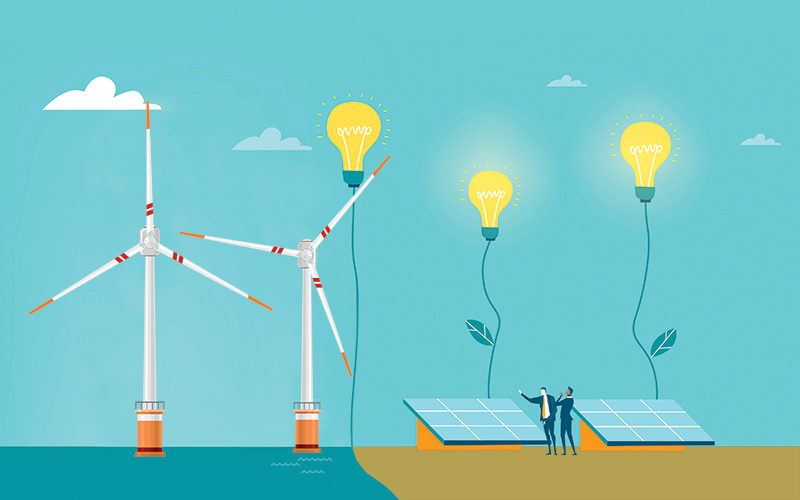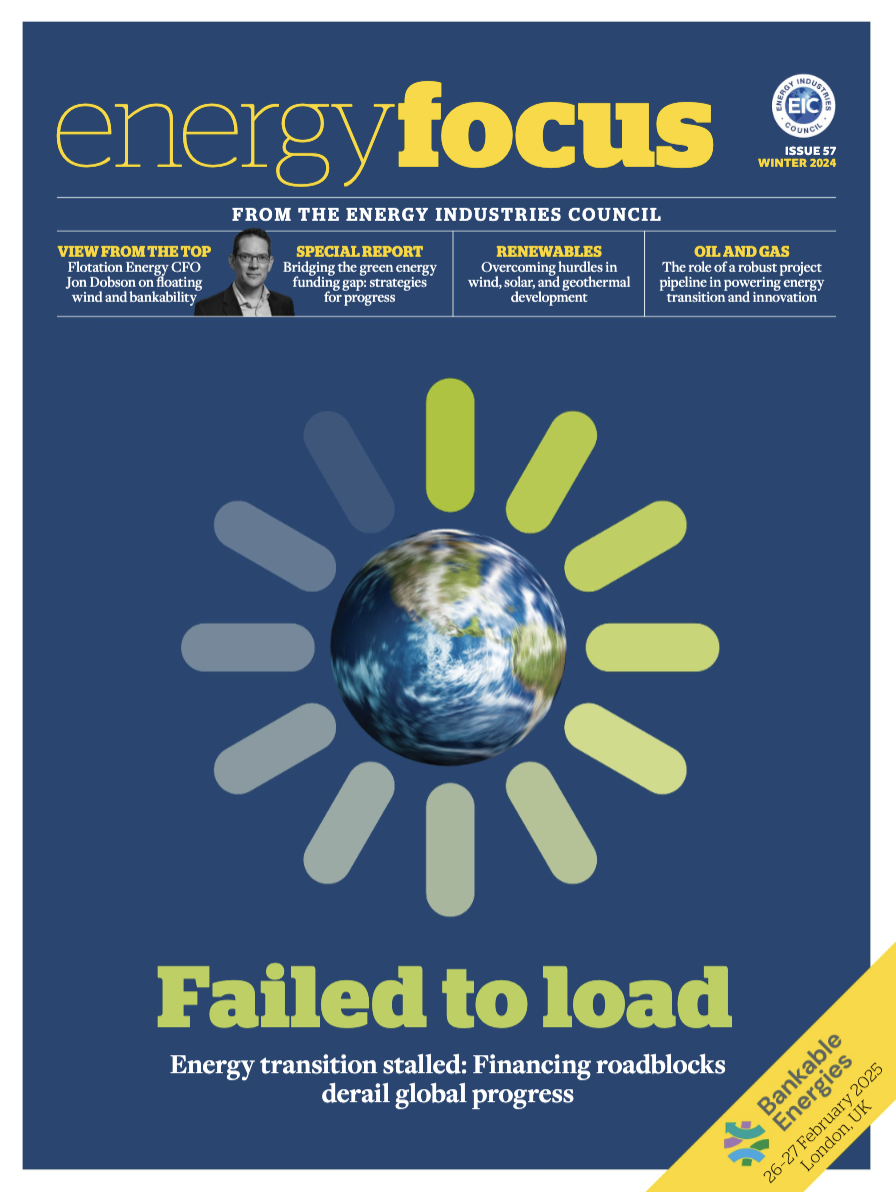Profits prove elusive in the clean energy transition
It has been a challenging year for renewables. Inflation is hitting industries such as offshore wind hard, yet some providers are hoping perseverance will pay off, says Sara Verbruggen

Policies aiming to decarbonise energy supplies and deliver net zero have facilitated increased investment in renewable energy, such as wind and solar. In 2023, for every US$1 invested in fossil fuels, US$1.70 is going to clean energy, according to the International Energy Agency. Five years ago, that figure was US$1 for US$1.
However, despite growth in clean energy generation, the energy crisis has exposed economies’ reliance on fossil fuels. The private equity sector is making the most of this transitory period: renewable infrastructure assets offer long-term stable returns and meet environmental, social and governance requirements while commodity price rises fuel oil and gas (O&G) deals.
Offshore wind margins under pressure from rising energy costs commodity prices
Renewable and clean energy comprises a multitude of sub-segments and technologies, from hydropower, solar, onshore wind and offshore wind to less mature sectors such as battery storage, renewable hydrogen/power-to-x (PtX) and carbon, capture and storage (CCS). In the case of offshore wind, where competitive auctions have catalysed progressive reductions in the levelised cost of energy, exposure to high energy costs and commodity prices has squeezed margins to below the level required to justify the multi-billion-dollar CAPEX required.
In its January–June 2023 interim report, Swedish energy producer and offshore wind developer Vattenfall cited cost increases of up to 40% as its reason for halting development of its 1.4GW offshore wind project Norfolk Boreas, off the east coast of the UK.
Inflationary pressure caused by the rising costs of fuel and key commodities such as steel resulted in zero offshore wind bids in the fifth allocation round (AR5) of the UK Contracts for Difference auction for new renewables capacity. In the US, developers of several offshore wind projects are also seeking price rises for their offtake agreements, taking inflation into account.
The impact is being felt in the offshore wind supply chain, which includes companies that have diversified to capture opportunities from renewables as well as core activity in offshore O&G and marine.
Straddling O&G and renewables
“Renewables margins appear smaller at this time but we are hopeful this will change in the not-too-distant future,” says Balmoral sales director Gary Yeoman. Around 60% of new enquiries relate to renewables projects, while 62% of new sales relate to O&G and 38% to renewables. “Over the next decade, we expect it to be 60% renewables and 40% O&G,” he adds.
Offshore wind accounts for most of ABL Group’s renewable work, and it has recently secured work for PtX concepts from the O&G industry.
“ABL’s profitability in renewables is lower than in O&G. However, if you were to split out upstream and downstream O&G, downstream profitability is not dissimilar to renewables. In upstream and exploration and production, profits are higher and that is where most of ABL’s business is,” says Dr RV Ahilan, chief energy transition officer.
Demand for Servomex’s gas analysis tools, systems and related services for carbon capture and electrolytic hydrogen production is less than for O&G. It is positioning itself for growth from these new markets, often in response to O&G clients.
“We work with the majors as they transition away from traditional activities towards cleaner energy – for example where Exxon is intending to develop carbon capture projects in the Gulf of Mexico,” says Stephen Firth, Servomex’s Product Manager – Special Projects/STEM Manager.
“We definitely see that clean energy-focused businesses carry a premium,” he adds. “Part of that is driven by the growth rate of clean energy. O&G is seeing growth rates of 4–5%, while carbon capture and hydrogen’s growth rate is double. It is a faster rate, but starting from a much smaller base – there are still fewer of these projects around. EICDataStream shows 383 live CCS projects globally, which is much greater than the previous few years.”
What goes up must come down
Dr Ahilan says that while acquisition targets in the renewables industry were inflated in 2021–22, this is changing. “ABL has an internal understanding of the premium it should offer companies in its acquisition sights. In one case, the valuation of a target was well in excess of the bid ABL submitted. Now these valuations have come down, as we’re seeing companies that previously rejected offers return to the table,” he says.
One concern voiced during research for EIC’s seventh Survive & Thrive Insight Report was for businesses in the renewables sector that have been valued more highly, reflected in a higher EBITDA multiple, some of which are actually making losses. Valuations could end up being reduced because they are not turning a profit.
70% of the world’s announced 13,500 energy projects are for green developments, but this is only worth about 30% of the US$13.5tn market. Conversely, oil and gas claims about 30% of project quantity for nearly 70% of the value. Source: EICDataStream
The critical importance of responsive policy
The headwinds facing certain renewable and clean energy segments mean policymakers need to be flexible and adaptive. In September 2023, the European Commission released its European Wind Power Package, aiming to improve auction systems in member states and focus on skills, access to finance and stable supply chains. In her annual State of the EU speech, Commission President Ursula von der Leyen said price-based auctions have “led to a race to the bottom” and need to change.
TheCityUK, an industry-led body representing UK financial and related professional services, acknowledges that while the UK government has set out a high level of ambition, such as its target for 50GW offshore wind by 2030 and Net Zero Strategy, it should go further, developing and communicating detailed timelines for reducing fossil fuel reliance and helping firms to understand the attractiveness of projects and allocate capital.
Rob Jewkes, Venterra’s Chief Executive Officer, says: “O&G producers have the benefit of transparent market pricing to evaluate and achieve their project returns. The pricing framework for participants in the energy transition is very much driven by government policy – so although offshore wind is the cheapest form of new energy available to our communities at scale, offshore wind developers and their supply chains are reliant on pricing fixed at a level that does not allow for a viable industry.
“The recent failed UK round AR5 is demonstration of this and calls for government to work with industry to set more realistic investment frameworks to allow developers and the supply chain to deliver on their role in the energy transition.”
Dr Ahilan adds: “O&G is more profitable and it is also a beneficiary of subsidy, explicit and less obvious, whereas renewable energy markets are becoming less subsidised. Only increasing the price of greenhouse gas emissions will encourage more investment by O&G players in renewables and offshore wind. It is happening but not fast enough.”
Preparing now for future growth
According to management consultancy Bain, the energy transition is unique among the global paradigm shifts that have driven private equity dealmaking in the past 30 years, being “fraught with politics, regionalism, regulatory uncertainty, and deep complexity”. It warns that sitting on the sidelines is a clear risk for investors. As the transition broadens, private equity firms need to establish experience, capabilities and networks that will allow them to “turn change to their advantage”. Suppliers and would-be suppliers to the renewables industry know this.
Yeoman says: “The market is moving at a pace that supply chain companies need to establish themselves because it will become very buoyant at some point; it is all about timing. As a company, Balmoral is already well established in offshore renewables, particularly fixed and floating wind.
Firth adds: “The supply chain is positioning itself for when these smaller, high growth markets gain real traction. You have to be ready for when they take off.”
Image credit | iStock






Follow us
Advertise
Free e-Newsletter